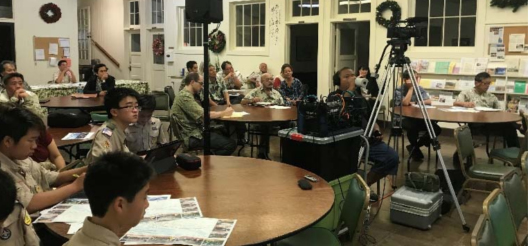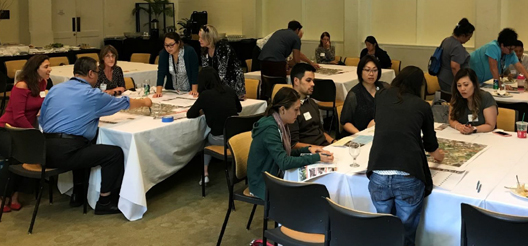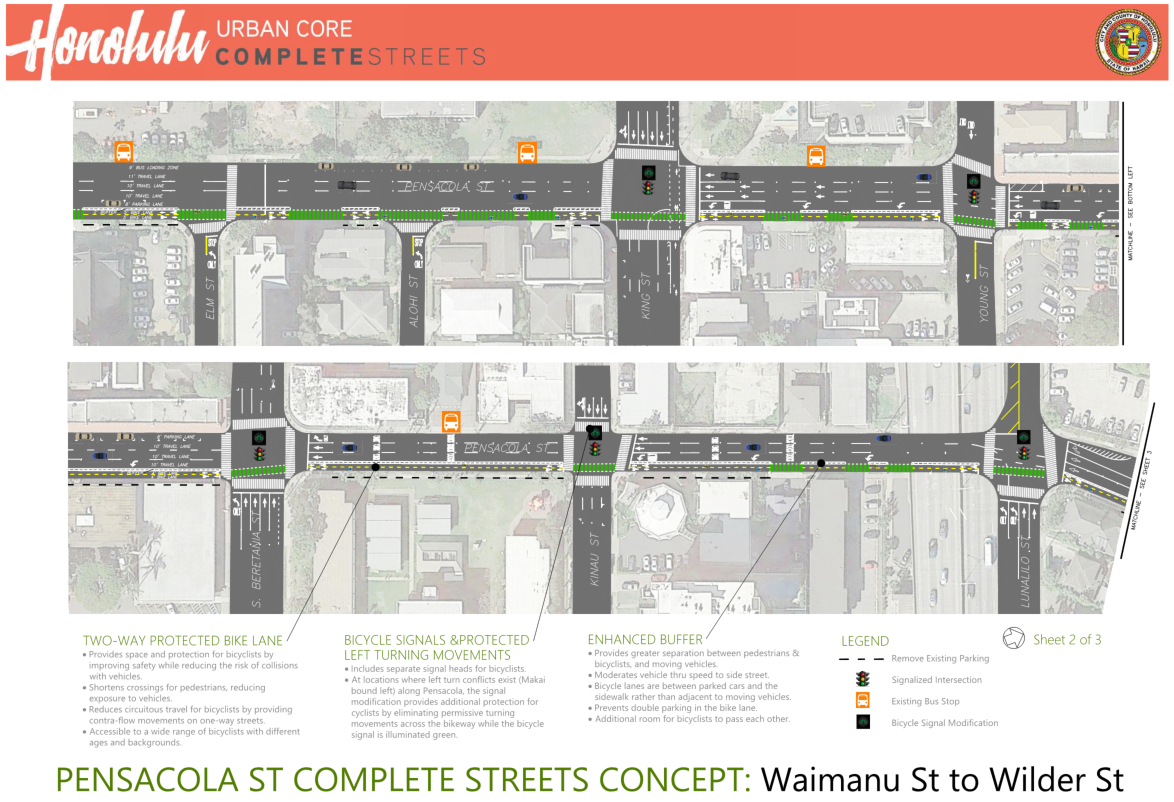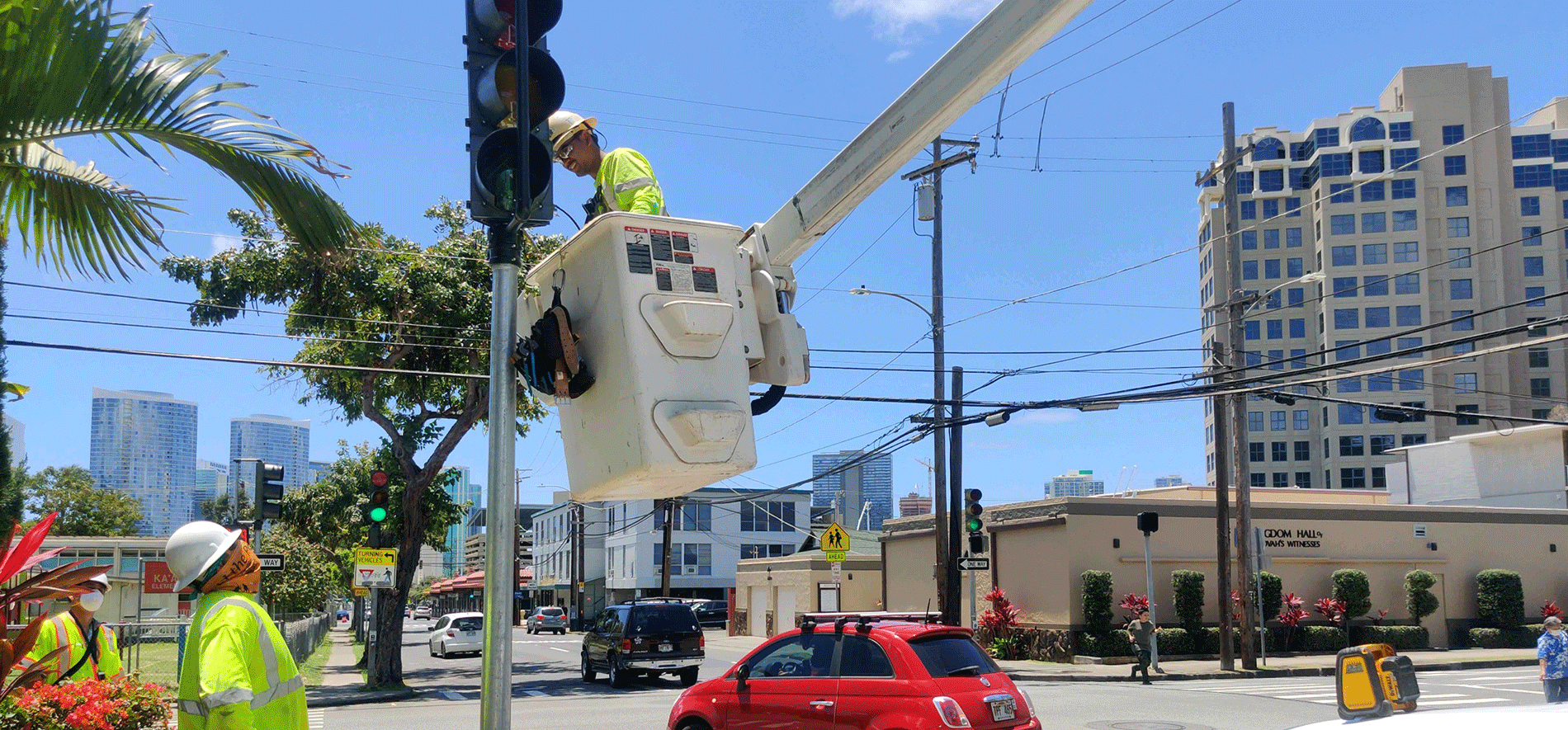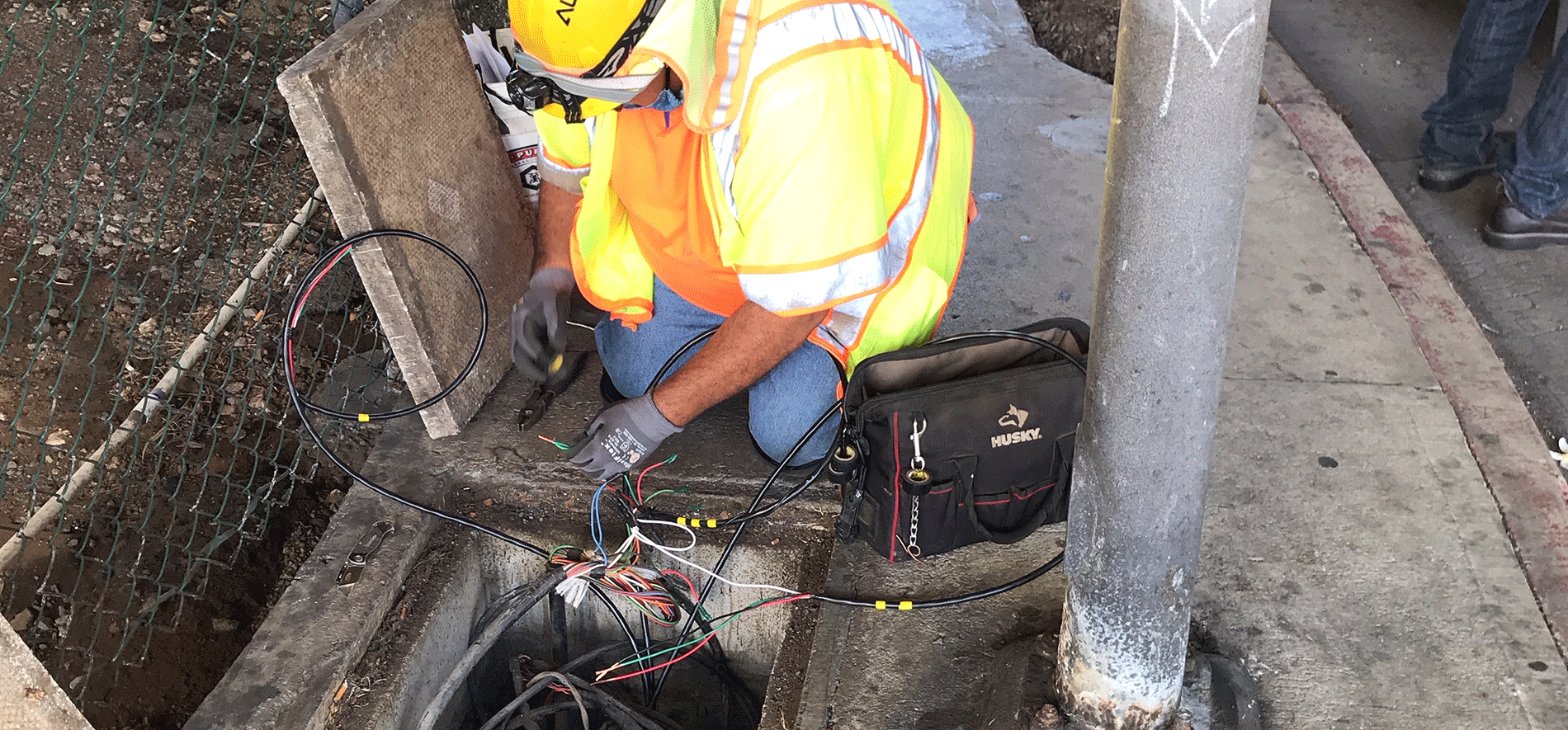Partnering From Concept to Construction
Bringing Project Ideas to Life from Start to Finish
At Fehr & Peers, we are passionate about bringing concepts for transportation futures into reality to improve communities. We understand the importance of supporting our clients in key decisions and execution from the very early stages of project development to final design and construction. When our engineers and planners engage with our clients on a project, they are prepared with various services extending past the design stage and into construction assistance. The COVID-19 pandemic challenges us to develop safe engagement processes while keeping essential projects moving forward. As we support the ongoing construction on one of those essential projects working to provide safe and healthy streets in Hawaii, we can reflect on the start-to-finish process, teamwork, and collaboration that has led us to this final stage in the project’s development.
The Honolulu Urban Core Complete Streets project exemplifies the path and partnership in a project from concept all the way through implementation. Fehr & Peers served as the prime consultant in partnership with the City and County of Honolulu and SSFM International to undertake a large and unique project goal: integrating complete streets solutions into approximately 16 miles of roadways within Honolulu’s urban core. As the first project of its kind in Honolulu, many challenges were presented, from very limited existing bicycle facilities to complex curb space design scenarios. The city’s urban environment includes a high level of pedestrian activity, as well as parking, transit, and bikeshare, so an effective and safe transportation network for all modes was critical for success through the planning and design process. Recognizing Honolulu’s motivation to plan and develop complete streets, our team set to work in guiding the project development process from initial concepts and prioritization through to construction.
Community Engagement
Community input is essential to the success of projects, especially when new facility types are proposed that will modify a street’s cross section and potentially change available roadway and parking capacity. An extensive public outreach process was conducted to reach a wide range of diverse stakeholders for the Honolulu Complete Streets project, beginning in September of 2017. A variety of different opportunities to engage and provide input were created to reach as many people as possible who live, work, and play in the urban core. The engagement activities included over 24 consultations and presentations with stakeholder groups, schools, employers, businesses, and agencies, as well as large-scale media, website, and mail campaigns. Exciting community events such as pop-ups, sit-down sessions, and several walk and bike charrettes drew almost 600 participants. Our staff participated alongside community members at the unique walk and bike charettes, exploring possibilities while biking alongside citizens and gaining insights from them.
Partnership in Prioritizing
The collective 16 miles of this project posed a large and comprehensive network to plan and design for. Therefore, part of the early scope of the project involved examining the miles of streets in Honolulu and strategically identifying which ones to prioritize, and which designs were most appropriate for each roadway context. During this process, our project team worked closely with City and County of Honolulu staff in reviewing potential connections to existing facilities, identifying gaps in the active transportation network, and conducting site visits to determine potential constraints and opportunities for various alternatives. Some level of prioritizing and planning was involved for all 16 miles of the project’s streets, and many facets were examined to establish the most essential and practical priorities to focus on, including costs, right-of-way considerations, obstacles, connections, and consistency with the Master Plan. The valuable community and stakeholder input gathered from the engagement efforts was incorporated with this research and analysis to advise the City and County of Honolulu on the most effective priorities for the project.
Development of the Design Concepts
To encompass every important aspect into the design concepts, our active transportation experts biked all study street segments themselves for first-hand experience and perspective. Photos were taken and field work was conducted as well before the design concept process started. Designing for the prioritized streets presented challenges, including complex signalized intersections, competing curb space priorities, and limited right-of-way. It was crucial to find design solutions that balanced the needs of parking, walking, bicycling, and transit. An essential element of this process was recommending innovative design treatments, including a center-running bikeway on one street to minimize transit conflicts, maximize use of the available right-of-way, and enhance safety and roadway connectivity for all users. The Pensacola Street design, illustrated in the concept below, was among the first to be chosen for final design and implementation for a two-way protected bikeway. Since the two-way facility required modifications to existing traffic signals and repurposing a vehicle travel lane for the bikeway, the project team redesigned those devices and also prepared the plans, specifications, and cost estimate (PS&E) for the signing and striping plans.
Support Through Construction
The Pensacola Street portion of the project is currently in construction. Fehr & Peers is working with City and County of Honolulu staff and the assigned construction manager overseeing the day-to-day construction to bring the project concepts to life. This involves fielding design questions and Requests for Information (RFIs), as well as helping to address issues that are raised from contractors during construction. Our goal is to keep the project moving and help the construction manager control costs. In many cases, we would normally provide on-site support as well, but for this project we are adapting our support due to COVID-19 safety measures and providing all support remotely.
The Honolulu Urban Core Complete Streets project is just one example of the many complex multimodal projects that Fehr & Peers is engaged in, partnering with local agencies and communities on planning, design, and construction. Fehr & Peers is currently engaged in construction support on dozens of complete streets projects across the company, such as the North 40 Residential project in Los Gatos, CA, the 575 Benton project in Santa Clara, CA, and the East Bay BRT project in Oakland, CA.
As we navigate these uncertain times surrounding COVID-19, trends are emerging indicating more use of active transportation modes, as evidenced by the Safe and Healthy Streets movement. Therefore, the importance of planning and building safe and convenient facilities also grows. To meet these needs for current and future projects, we are pivoting our internal Fehr & Peers Research and Development (R&D) efforts to provide effective and informed solutions for all project stages by addressing the specific, time-sensitive needs of the communities we serve.
How can our engineers and planners assist your community with complete streets solutions for complex active transportation challenges? Contact us today, and we’ll discuss how we can support you through each step of the process.

